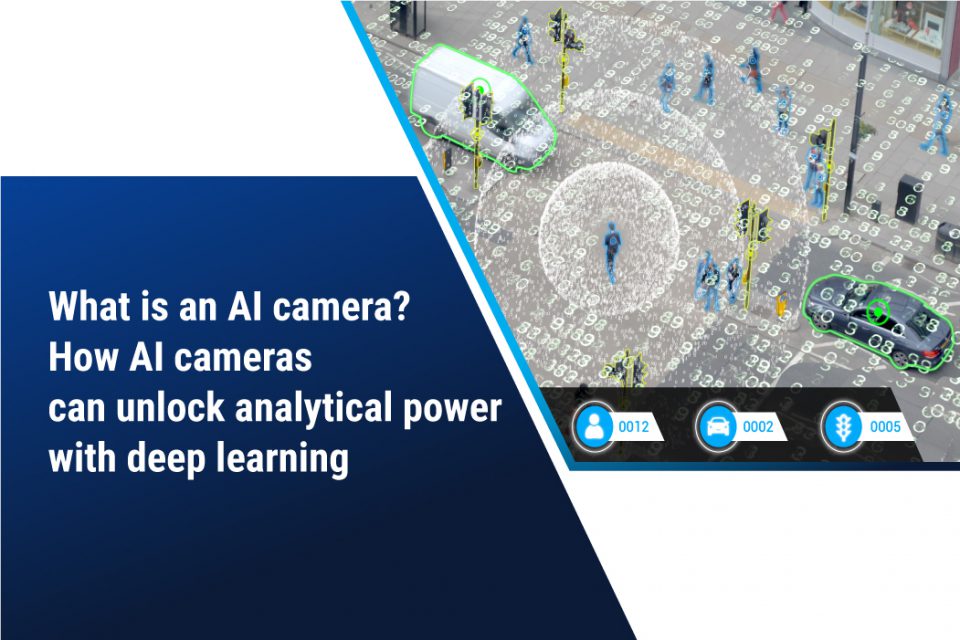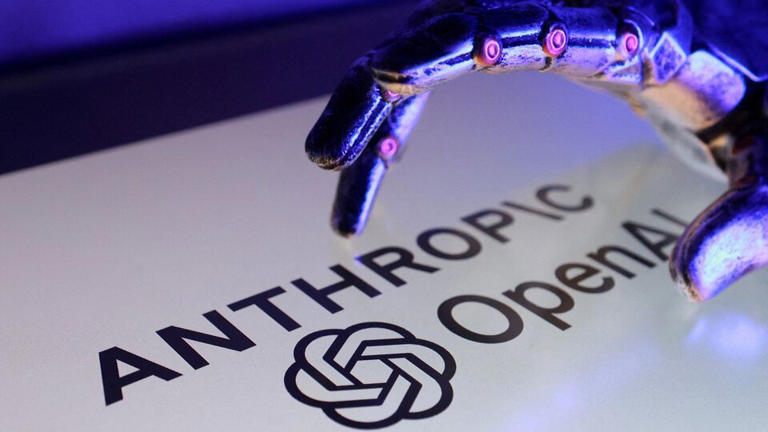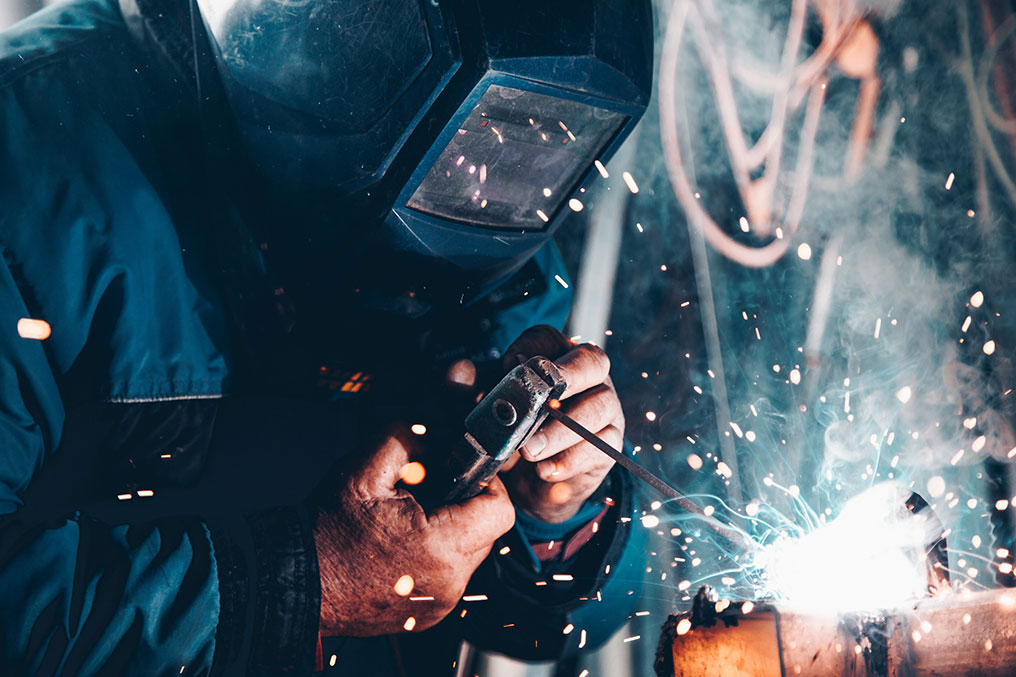Stories you may like
What is an AI camera? How AI cameras can unlock analytical power with deep learning
ML/DL-driven AI camera systems are powering embedded vision applications by helping make intelligent real-time decisions. Discover their main functions and viable use cases, and see why e-con Systems’ SMARTOdin22 is the smart AI camera for the future.
Deep Learning (DL) has been a transformational force in changing what embedded vision can do. However, let’s first compare it with Machine Learning (ML). ML is the ability of machines to recognize data patterns while constantly learning from them. Even though ML algorithms are not explicitly programmed, they still need predefined rules to perform specific tasks and understand patterns.
DL is a more advanced and sophisticated subset of ML based on an artificial neural network. DL algorithms demand far less human intervention, as the desired application outcome is provided as input for the machine to work out the details of achieving it. That’s why DL-based applications rely on large datasets to make real-time intelligent interpretations.
What is a DL-Powered AI Camera?
A deep learning camera (or an AI camera) is equipped with AI power to understand classifications like humans, vehicles, and more. Understanding such classifications, they have data-rich decision-making capabilities to detect movement and capture high-quality images while avoiding irrelevant information.
When it comes to deep learning, many tend to limit the discussion to the software and algorithms used to implement DL/ML techniques. However, hardware components play an equally significant part in collecting the necessary data for these computer applications or edge-based processors to analyze and make decisions.
Major Functions of a Deep Learning AI Camera
A deep learning AI camera has integrated imaging features – including classifying, processing, and segmenting images. Following are some of the most important functions and capabilities of an AI camera:
Image classification
As earlier addressed, AI cameras can automatically tag images to several classifications to identify and capture the right image at the right time. For instance, it can be used to detect damaged goods on the assembly line inside a warehouse.
Image recognition
AI cameras can assign every pixel to a particular classification – thereby enabling quick identification of multiple objects on a single image. This feature enables instant object recognition – helping determine sizes, shapes, types, and other specifications of objects. An example of this would be automatically identifying objects dropped into a shopping trolley in an autonomous checkout system.
Image processing
In a deep learning camera system, while the camera captures image data, high-end processors, like the NVIDIA Jetson series, process this information to derive inferences on the edge. This processed data can be immediately used for automated decision-making.
What is the Role of TOPS in AI Cameras?
TOPS, which stands for Tera Operations Per Second, is a metric used to quantify the computational power of processors. The role of TOPS in AI cameras is crucial, as it directly impacts the ability to perform AI-related tasks.
High TOPS values in a processor indicate better performance capabilities, which make it suitable for applications requiring real-time, intelligent processing. Key components of TOPs in AI cameras include:
- Better imaging: The computational power quantified by TOPS can be leveraged to enhance imaging capabilities such as noise reduction, dynamic range adjustment, and image stabilization. Therefore, AI cameras become more adaptable to various lighting conditions.
- Performance measurement:TOPS provides a direct measure of the AI processor’s ability to perform one trillion operations per second. This is critical in AI cameras, where processing vast amounts of data in real time is necessary for tasks such as image recognition, object detection, and video analysis.
- AI task efficiency:Higher TOPS indicate a processor’s higher capacity to handle complex AI algorithms. Hence, it helps execute advanced AI features like real-time facial recognition with minimal latency.
- Energy optimization:AI cameras often operate in environments where power consumption is a concern. Processors with higher TOPS per watt are more energy-efficient, enabling AI cameras to perform more computations with less power.
Key Embedded Vision Use Cases of an AI Camera
Traffic management
Smart traffic systems are crucial to modern urban planning. They prevent traffic congestion and overcrowding while significantly reducing the number of fatal accidents. By incorporating deep learning-based image segmentation functionality, these systems can zero in on visual information in real time.
Hence, it becomes hassle-free for an AI camera to segment/track vehicles, estimate traffic density, monitor adherence to speed limits, etc.
Smart farming
Performance is in the details for auto farming systems because even the slightest misinformation can trigger business loss or overspending. So, their AI camera solutions rely on powerful deep learning algorithms.
These AI cameras are expected to capture minuscule details like crop growth, soil quality, diseases, etc., and automate critical parts of the farming process.
Automated sports broadcasting
AI cameras have flipped the script on how sporting events are broadcast to audiences all over the world. From soccer and baseball to cricket and basketball, easy-to-deploy AI camera systems are being used to capture and stream live footage – with integrated network connectivity.
In addition, smart cameras can run deep learning algorithms to analyze video streams automatically, offering valuable player input to coaches and team managers.
Security and smart surveillance
The surge of smart cities has caused the demand for continuous surveillance to ensure citizen safety. Also, considering the boom of business infrastructure, ensuring 24X7 security in and around the premises can no longer be compromised. So, AI camera solutions have become very popular in smart surveillance applications such as parking lot management and street monitoring.
Smart AI cameras can capture images and videos to create security protocols by applying deep learning techniques – from monitoring and analyzing crowds with facial recognition to processing videos in real-time to identify threats and raise alarms.
Medical
In the healthcare sector, embedded vision systems in AI cameras can help with patient monitoring, surgical assistance, and diagnostic processes. They monitor patient vitals, detect falls, and ensure patient safety in hospitals.
During surgeries, AI cameras provide enhanced imaging for precision and guidance. They also assist in analyzing medical images to detect diseases early.
e-con Systems’ SMARTOdin22_PoE_IP67 – A Cloud-Powered Smart AI Camera
e-con Systems’ SMARTOdin22, equipped with a 2MP GigE interface, integrates an advanced Neural Processing Unit (NPU) for executing a variety of AI algorithms. Based on the Sony STARVIS IMX662 sensor, this camera offers superior AI performance, particularly its object detection capabilities. It can recognize people, bicycles, motorcycles, automobiles, buses, and trucks, in addition to its powerful facial detection technology.
Furthermore, SMARTOdin22 supports the ONVIF protocol for Ethernet Gigabit connectivity, ensuring reliable image and control data transmission across wired LAN networks. The GigE connection facilitates video data transmission over distances up to 100 meters, exemplifying its capacity for high-performance networking. Other highlights of SMARTOdin22 are:
- 2 TOPS (maximum)
- Embedded within the EN675 EVK SDK for enhanced AI power
- HDR technology for running AI algorithms in tough lighting
- Exceptional low-light and NIR sensitivity
A detailed look at using AI in embedded smart cameras
Combining Artificial Intelligence (AI) with embedded cameras has paved the way for visual systems that can intelligently see and interact with their surroundings. Discover about the role of AI in embedded camera applications, the benefits, and use cases. Get exclusive information on EdgeECAM50_USB, e-con Systems’ edge AI smart USB camera.
As impressive as embedded cameras already are in their functionality, their true potential is only beginning to be unlocked through the integration of Artificial Intelligence (AI). Merging AI with embedded cameras amplifies their capabilities while paving the way for more intelligent and responsive visual systems. This promises to reimagine how machines see and interact with increasingly complex surroundings.
In this blog, let’s find out about the role of AI in embedded camera applications, the benefits, and the most popular use cases. You’ll also get information on EdgeECAM50_USB, e-con Systems’ latest edge AI smart USB camera.
How AI works in embedded camera applications
AI operates as the analytical engine that transforms vast streams of visual data into actionable insights. Upon capturing visuals, AI algorithms preprocess this data to enhance clarity, after which they extract relevant features- faces, objects, or patterns. Using pre-trained models, the AI system interprets what it observes, enabling timely decisions – ranging from object identification to anomaly detection.
The camera’s AI components also engage in a continuous learning process, refining their accuracy and adaptability over time. So, the camera’s responses evolve with its environment and user requirements.
Benefits of AI-based embedded cameras
Superior image quality
One of the primary benefits of integrating AI into embedded cameras is the significant improvement in image quality. Algorithms can automatically adjust settings based on lighting conditions, rectify distortions, and stabilize images in real time. Advanced AI models can even enhance dynamic range, reduce noise, and ensure the resultant image or video is crisp and clear, regardless of the initial capturing conditions.
Predictive maintenance
AI can monitor the health of the camera’s components, predicting potential malfunctions or failures before they occur. This proactive approach ensures that the camera system remains in optimal condition, reducing downtime and maintenance costs. It alerts the user or system administrator about necessary interventions, ensuring longevity and uninterrupted operation.
Power efficiency
Contrary to the belief that advanced functions consume more power, AI can optimize the camera’s operations to ensure power efficiency. Algorithms can decide when to record, analyze, or transmit data, thereby conserving energy. Additionally, AI chipsets designed specifically for embedded systems are optimized for energy efficiency, ensuring that the camera works longer on a single charge or reduces overall power consumption.
Customization and flexibility
AI brings a level of adaptability to embedded cameras. Users or developers can train their cameras for specific tasks, be it detecting a particular type of wildlife or monitoring machinery in a factory. As AI models can be updated and retrained, cameras can evolve with changing requirements, ensuring that they remain relevant and useful across various scenarios and over extended periods.
Data compression
Storage is always a concern with cameras, especially high-resolution ones. AI can intelligently compress visual data, ensuring that it retains quality while occupying less storage space. Furthermore, AI can decide what data is essential and needs to be stored, versus what can be safely discarded, optimizing storage utilization even further.
Simple use cases of AI cameras
In-vitro diagnostics
- Tube classification: AI-driven embedded cameras can differentiate between various types of tubes based on their size, color, markings, and other distinguishing features. This ensures that labs and medical facilities can sort and utilize the appropriate tubes for specific tests or procedures.
- Cap identification: AI cameras can identify and classify tube caps based on their color, shape, or any other unique identifiers. This aids in reducing errors in sample handling, ensuring that caps are correctly matched to their respective tubes.
- Liquid level detection: These AI cameras can analyze tubes and containers to detect the volume of liquid present. Through AI, even minute changes in liquid levels can be noticed, ensuring accuracy in tests, dosages, and other critical applications.
Remote patient monitoring
- Vital sign monitoring: Cameras equipped with AI can remotely monitor patients’ vital signs, such as heart rate or respiration rate, by analyzing subtle changes in skin color or chest movements. This helps in continuous monitoring without intrusive equipment.
- Fall detection: Especially important for elderly patients, these cameras can detect unusual movements or postures that indicate falls, triggering immediate alerts to caregivers or medical professionals.
- Medication adherence: The cameras can track if patients are taking their medications on time and in the right dosage, ensuring adherence to prescribed treatments.
-
Smart traffic management
- Traffic flow analysis: AI-based cameras can analyze real-time traffic conditions, helping in dynamically changing traffic light durations to optimize flow and reduce congestion.
- Accident detection and response: The system can instantly detect accidents or obstructions, alerting authorities and rerouting traffic as necessary.
- Vehicle classification: By classifying vehicles, from trucks to motorcycles, cities can implement dynamic tolling or understand roadway usage better.
-
Advanced biometrics
- Facial recognition: Beyond the traditional methods, AI-enhanced cameras can recognize faces even in varying lighting conditions, angles, or with partial obstructions, ensuring secure access to facilities or systems.
- Gait analysis: By studying the unique way individuals walk, AI cameras can recognize and authenticate individuals, adding an additional layer of security.
- Emotion detection: In certain environments, like airports or secure facilities, detecting heightened emotions like stress or anger can be indicators of potential risks.
-
e-con Systems’ latest edge AI smart USB camera
EdgeECAM50_USB is an edge AI smart USB camera based on the 5MP low-noise onsemi® AR0521 CMOS image sensor. It is specially designed, developed, and manufactured by e-con Systems for pre-analytic tasks like pre-analytical tasks, such as tube classification, cap identification, liquid level detection, etc. EdgeECAM50_USB comes with a powerful dual-core processor for running AI/ML algorithms directly on-board. Thereby, it enables fast and accurate data processing without extra hardware.
Other highlights of EdgeECAM50_USB include:
- Advanced AI capabilities
- Support for frameworks like TensorFlow Lite Micro and DeepviewRT
- On-board ISP for auto-exposure, auto-white balance, etc.
- Compact form factor
- USB 2.0 interface






User's Comments
No comments there.